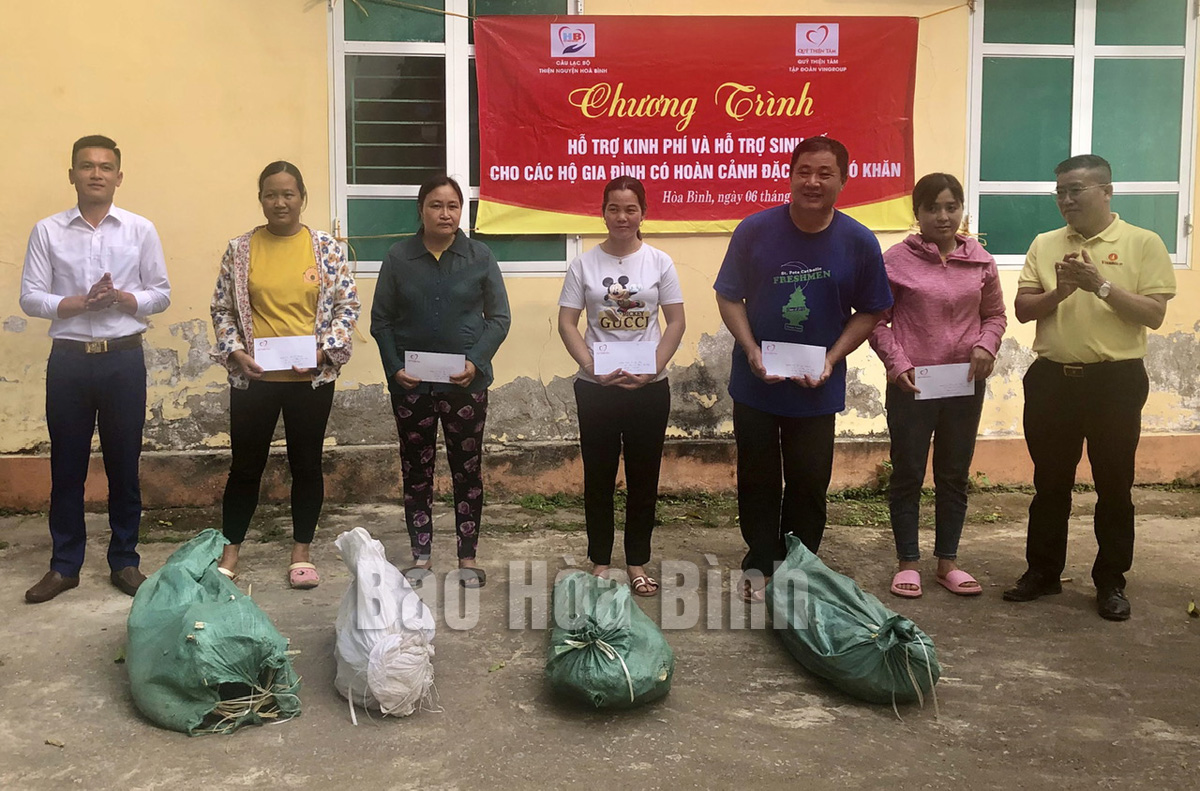
(HBO) – Ethnic households in Mai Chau district have had better livelihoods and incomes thanks to support from local authorities and organisations. In Tong Dau commune, people were given a high-quality rice variety to grow in a pilot area of 4 ha. Seeing positive results of the pilot programme, last year, local farmers expanded the cultivation area using this rice variety.

Meanwhile,
in Cun Pheo commune, the district’s Red Cross Association and other organisation
gave people young animals for raising.
People
in other communes of Mai Ha, Son Thuy, Bao La, and Xam Xoe were also provided
with seeds, young animals, and medicinal plants.
With
funding from the National Target Programme for Socio-economic Development in
Ethnic Minority and Mountainous Areas, Mai Chau district People's Committee
supported each household in Bao hamlet 3 million VND to buy seeds. The
committee coordinated with the GNI organisation to open training courses on
livestock raising techniques, and assisted local residents in the establishment
and operation of the Muong Pa cooperative that specialises in raising and
supplying indigenous pork.
From
17 members, the cooperative now has nearly 50 members. The cooperative’s pork
is sold in Hanoi and neighbouring provinces, bringing stable income to the
cooperative’s members.
According to Ngan Van Toan, deputy head of the district's Department of
Agriculture and Rural Development, programmes and policies to support ethnic
minorities and ethnic minorities have been effectively implemented.
Initial results show that the support helped to increase production value,
income and improve people's living standards.
Ha Van Hai, head of the district's Ethnic Group Affairs Section said that the
district is home to many ethnic groups with the Thai people accounting for
nearly 60% of the district’s population and the Muong 16.6%.
Over
the past time, the district has focused on implementing Resolution No. 03-NQ/TU
of the provincial Party Committee on socio-economic development in ethnic
groups and mountainous areas from 2021 to 2030.
One of
its key tasks is to develop ethnic groups and mountainous areas in association
with economic restructuring, contributing to stabilizing and improving the
people's living standards.
The
Mai Chau district Party Committee has directed agencies, departments, sectors,
and mass organisations to strengthen coordination, and effectively combine
poverty reduction efforts with the implementation of the two national target
programmes on sustainable poverty reduction and new-style rural area
construction.
The
district also supports ethnic group people with social security policies and
vocational training programmes for rural workers.
Such
support not only contributes to improving the lives of ethnic people but also
helps the district to meet the criteria of new-style rural area construction
and step up sustainable poverty reduction in ethnic minority areas.
The
district strives to reduce the poverty rate in ethnic group areas by 3-4% yearly
until 2030./.
The emulation movement "Hoa Binh joining hands to build new-style rural areas” has been widely spreading, becoming a driving force that motivates the localities to renew rural landscapes and improve the material and spiritual lives of the residents. In this movement, the people play a central role-both as the main implementers and direct beneficiaries of its outcomes.
In response to the global digital revolution, Hoa Binh Newspaper is transforming itself into a modern and multi-platform media hub, blending cutting-edge technology with a restructured newsroom and a new generation of tech-savvy journalists.
Hoa Binh province’s Association of the Elderly recently held a conference to review the project on expanding the inter-generation self-help club model until 2025.
In a move to implement Resolution No. 57-NQ/TW, issued on December 22, 2024 by the Politburo, which targets breakthroughs in science-technology development, innovation, and digital transformation, the Hoa Binh provincial Department of Health has issued a plan to roll out the "Digital Literacy for All” campaign within the local health sector.
An Nghia Commune (Lạc Sơn District) is one of the communes that achieved the tha standard of the national new rural area in 2018. Entering a new development phase, the commune is now trying to meet the criteria for the advanced new rural development. With the strong political will and the public consensus, the commune is gradually overcoming the challenges to reach this goal, aiming for the sustainable development.



